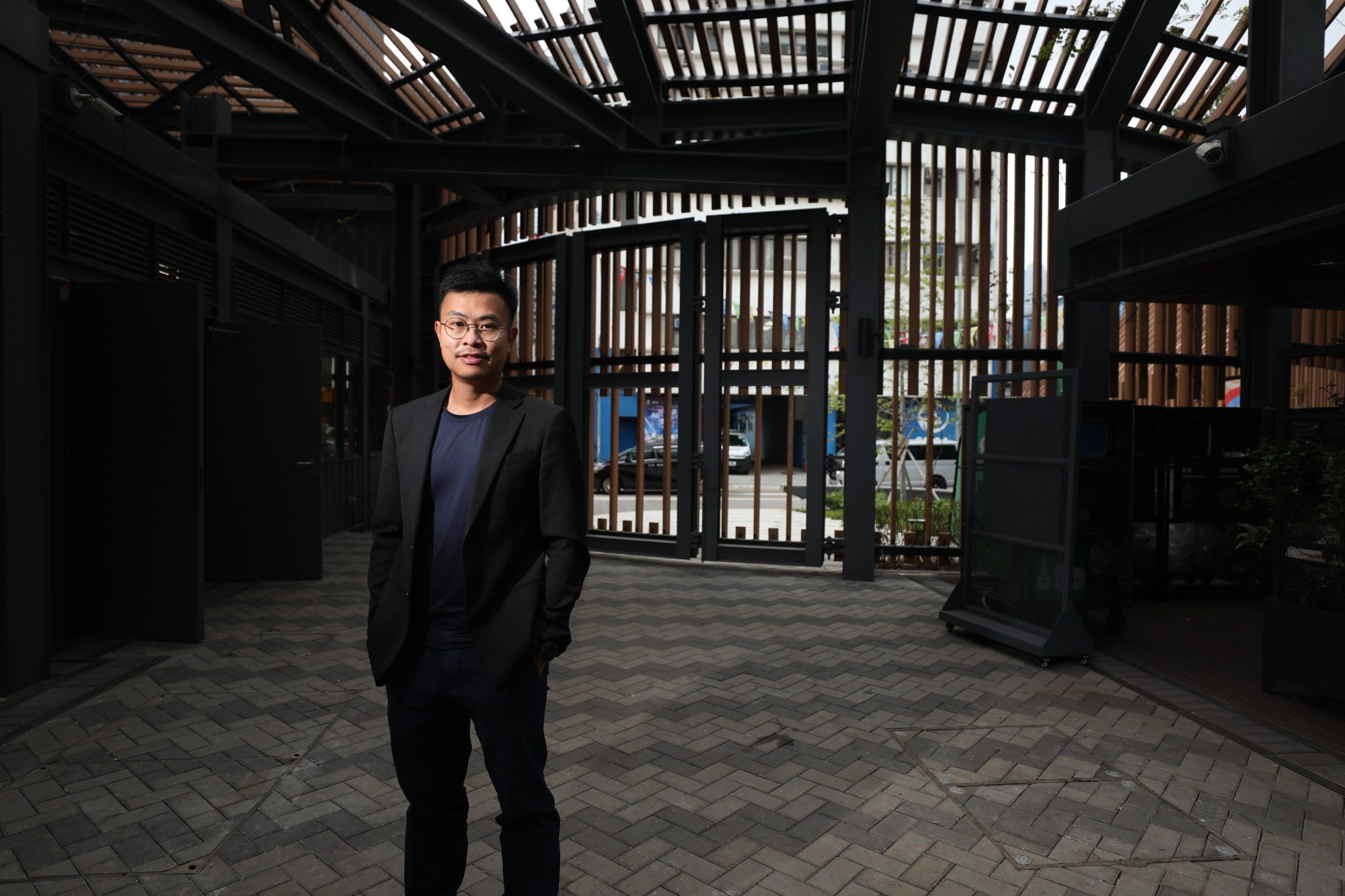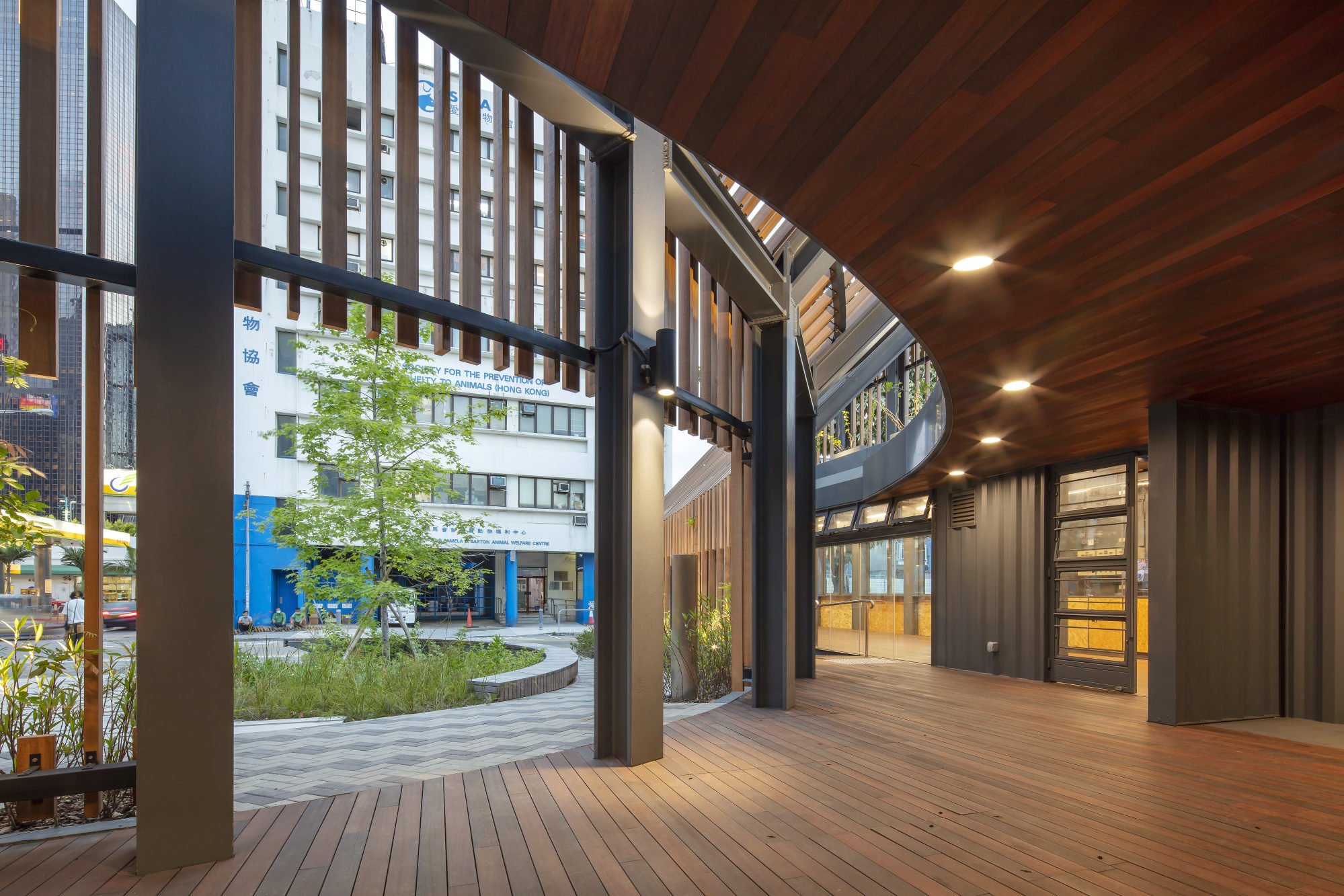
Hong Kong’s newest recycling centre is as beautiful as it is useful, with a courtyard for everyone - even pets
- The recycling centre in Wan Chai boasts five-star aesthetics and incorporates an extensive trellis, salvaged windows, a rain garden and a welcoming courtyard
- The project was a winner of Japan’s prestigious Good Design Award in 2021
When BREADstudio co-founder Benny Lee Chiu-ming adopted a cat in 2016 from the
Wan Chai branch of the Society for the Prevention of Cruelty to Animals (SPCA), little did he realise that the process would inspire an award-winning project.
Inadvertently lodged among happy memories of the occasion was the niggling question: shouldn’t humans and their new charges have more time and space to bond before going home together?
In 2018, together with the studio’s other co-founder, Paul Mui Kui-chuen, and colleagues, Lee came up with the winning entry in a design competition for the site, opposite the SPCA’s headquarters. One of the venue’s highlights is a generous courtyard for all to use – four-legged friends included.

“We unconsciously injected the idea into the design,” says Lee, pointing to the horseshoe-shaped centre that opens its arms to the community. Within the building’s embrace, an expansive outdoor area is furnished with a curved bench, amid greenery, bearing the unspoken message: “Come in.”

Like others in the network, it seeks to be more than simply a dumping site for everything from small electrical appliances to fluorescent tubes, glass bottles, paper and plastic. Areas for educational and community activities are incorporated into its elegant design to remind Hongkongers of their responsibility as consumers.
For the structure itself, made of steel, BREADstudio separated the main functions so that half accommodates operations (sorting, compacting, etc), while the other side is spacious enough for administrative work and indoor meetings: apart from enhancing operational workflow, the building affords layout flexibility via partitions.


The trellis is also multifunctional, supporting creepers and opening to accommodate recycled-goods trucks driven across paving that segues into a bay. Neatly concealed, the doors give little away about the site’s primary function from afar.
BREAD incorporated other practical choices, enabling the HK$29 million (US$3.7 million) project to be completed under budget, the pair proudly say. Grids were planned according to the dimensions of standard shipping containers, facilitating construction and making components (for example, frames and walls, prefabricated off site and assembled in situ) easy to transport.
Elsewhere, savings were realised in the materials used. They include recycled chipboard for interior walls and glass-reinforced plastic (GRP) to build the trellis, which lends the exterior a five-star aesthetic. (A friend, on seeing a photo in my phone, asked which hotel I’d visited.)

Indeed, in explaining why the project was a winner of Japan’s prestigious Good Design Award in 2021, the judges wrote: “The louvre roof that integrally covers the block with [sic] different heights depending on collection function is also beautiful.”
Textured using recycled wood, the GRP slats are as attractive as real timber, and not prone to warping or fading, Lee says. “These are low maintenance and have a low carbon footprint,” he adds.

Greenery on the roof should help bring temperatures down, although they acknowledge that, even with the help of ceiling fans and ventilation slits, the rooms in summer will need to be artificially cooled. (The five rooftop solar panels are insufficient to fully power the building.)
That said, shoots of optimism are inevitable from the project, some of them simple: the landscaped courtyard includes a rain garden – a depressed area that allows rainwater to soak into the ground, reducing the burden also on drainage.

There is also the incalculable benefit of learning by doing. “[In 2019] we went to the demolition site of the EMSD,” says Lee, referring to the redevelopment of the former Electrical and Mechanical Services Department premises on Caroline Hill Road, Causeway Bay. “It was a treasure hunt … in a time capsule. We walked through the entire site looking for elements we could recycle.”
Any fan of vintage design or industrial chic would be impressed. The steel window frames salvaged now distinguish the main door at GREEN@WAN CHAI. Reduce, reuse, recycle? Here, the three Rs strive to roll off the tongue.











